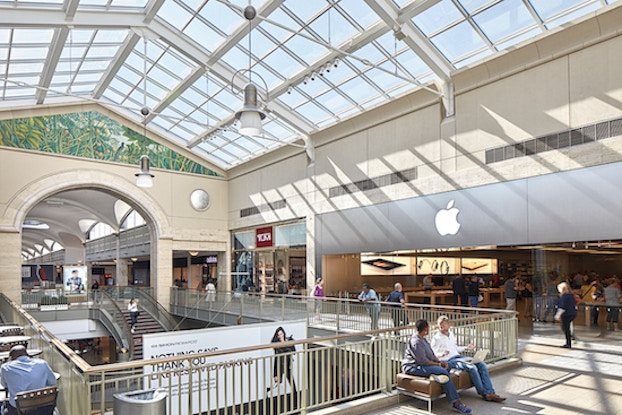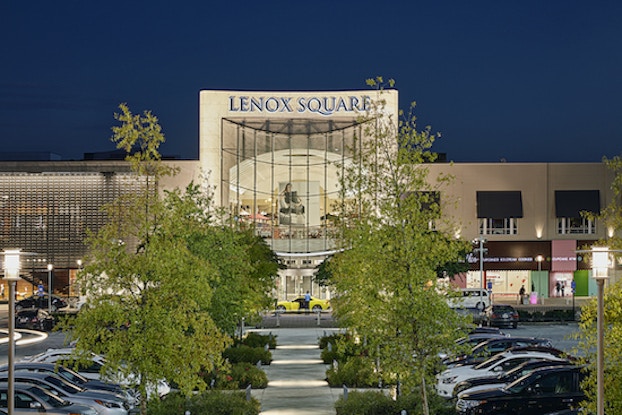
In retail, as in life, there are two kinds of experiences. Those which we’d like to move through quickly and efficiently, and those in which we’d prefer to savor the sensory occasion. The same could be said about shopping.
For most of us, buying toilet paper and toothpaste is purely transactional. Selecting fragrances or fruit, though, take our tactile and olfactory senses to task, demanding we slow our pace and consider the choices before plunking down our payment.
The tension between the transactional and the transcendent is ever present between e-commerce and physical retail. Despite reports of the demise of brick-and-mortar stores — commercial real estate services firm CoStar Group reported a record 105 million square feet of retail space was closed in 2017—experts like Amy Goldstein, a managing director in Accenture’s retail practice, say the in-store experience continues to be key.
“There are daily purchases for which digital commerce is perfect,” said Goldstein, “like shopping for commodities based solely on utility and price.” But, she said, there are many times when a consumer wants to do more than simply touch their smartphone screen.

Interested in a small business membership?
Find out how the U.S. Chamber of Commerce can help your company grow and thrive in today's rapidly-evolving business environment. Connect with our team to learn how a small business membership can benefit your bottom line and help you achieve your goals.
“The physical store offers something unique,” Goldstein said. “it’s a chance to see, touch and feel the products.” More importantly, she adds, it’s a chance to learn about those products, as well as the brand and its philosophy, from people who know what they’re talking about.
“And it’s a chance to experience all this in an environment that uses technology to truly enhance — not distract from — the retail experience,” she says.
The physical store offers something unique. It’s a chance to see, touch and feel the products.
Amy Goldstein, managing director at Accenture
A ‘trust bridge’ — and scale — for digit-first brands
It’s precisely why digitally native brands, that launched without any plans to set up shop in actual stores, have been quietly exploring and expanding into all kinds of physical spaces, even in (gasp!) malls.
Commercial real estate analysts at real estate service firm JLL confirm there’s a growing trend among these brands. For instance, women’s lingerie purveyor Adore Me recently opened two locations in New York and New Jersey malls and plans another two mall locations for early 2019 along its way to adding 300 more stores in the next five years. (Wayfair, the nation’s biggest online furniture retailer, just announced plans to open its first permanent store in the Natick Mall later this year.)
Chris Riccobono, the founder of men’s apparel brand UNTUCKit said, “About a month into launching the brand [in 2011], we were getting emails from people asking where they could find our shirts.” He says the reason is that the company’s shirts, which are designed to be worn untucked, appeal to a wide swath of consumers ranging from 25- to 70-year-olds. “We knew many of our customers would want to touch and feel the product,” Riccobono explained, “so opening physical stores really gave us the opportunity to create a trust bridge between us and our customers as they got to know the brand.”
UNTUCKit now has more than 50 stores across the U.S. and Canada, which Riccobono says splits its revenue fairly evenly between the online and offline retail landscape. “The two complement each other,” he said, and creating an omnichannel experience for customers is a key focus for the brand. “That means offering a seamless transition as customers shop with us via our website and our stores,” of which only 11 are standalone stores, while 42 locations are in a mall or lifestyle development, he said. (Some lifestyle developments aren't quite standalone and aren't quite malls).
Riccobono says UNTUCKit isn’t wedded to any one type of physical retail space. “We see value in both malls and standalone brick-and-mortar locations, and about half of our stores are in each type of space,” he said. “We like to open stores where our customers are, so as we evaluate where to open new physical locations our customers are the key deciding factor … rather than the space we can get in that market.”

Non-traditional store experiences bring new vibe to malls
Malls present a value proposition that some standalone shops don’t offer, according to Chidi Achara, chief creative officer of Simon Property Group (SPG).
In addition to investing approximately $1 billion annually over the last five years to upgrade sites into more modern mixed-use developments, “Simon works with brands to build awareness and consumer engagement,” Achara told CO—. “In order to successfully navigate the physical landscape in the mall, brands need access to the scale of consumer connectivity that Simon delivers by leveraging our 14 million email subscribers, eight million social followers, and more than four billion advertising impressions,” he said.
Achara notes that SPG currently has more than 200 shopping centers in 37 states and Puerto Rico that generate over $60 billion in retail sales for more than 3,000 brands. Plenty of the mall’s traditional tenants have been shuttering over the past two years. Data from SPG’s site in 2017 and 2018 showed a radical dwindling of staple store brands such as Teavana, which went from 78 down to one store and Johnston & Murphy, which shrank from 50 to 15 locations, among others. Other anchor department stores such as Sears have closed and left thousands of square feet empty.
Despite this seeming downturn, this hasn’t hurt SPG’s lease rates. The company’s CEO reported a 3.3% increase in the average base minimum rent to $53.54 a square foot compared to last year, in an earnings call last April (2018).
That’s likely because they’ve been strategic about installing replacements for those stores that have shuttered. Recent data from Foursquare that examined foot traffic in malls with venues that opened between 2016 to 2017 found that in many cases, direct-to-consumer brands with non-traditional in-store experiences are drawing shoppers.
After the Warby Parker location with its domed ceilings and original local art opened at the Domain Northside in Austin, Texas, in late 2016, the mall saw around 15% foot-traffic growth in the following four quarters. Although customers could just as easily try and buy their specs from the comfort of their home, the in-store experience Warby Parker created got them off the couch and into the community, which just happened to be at the mall.

The other reality is that malls present a revolving door for brands. For instance, as the largest U.S. mattress retailer, Mattress Firm made a quick entry and exit from Chapter 11 bankruptcy last fall to extract itself from pricey store leases as well as close down about 700 of its 3,000 locations that were underperforming — some of which are in malls.
Mattress Firm’s shuffling comes during a time when one of its competitors, direct-to-consumer startup Casper, has announced plans for aggressive expansion. A company spokesperson confirmed that between its launch in 2014 and the end of 2017, the company’s total revenue grew to more than $600 million.
Casper opened a small showroom on Bond Street in Manhattan shortly after launching and followed that with a variety of pop-up shops. Last year, the mattress brand opened its first permanent retail store and rapidly expanded that to include over 20 locations across North America. Casper partners with Target and offers products at 1,500 of its locations, too. The plan is to open 200 more branded stores over the next three years — which the company says will be evenly split between malls and standalone retail.
The reason, Casper’s spokesperson points out, is driven by a desire to be the “antithesis of the traditional mattress store, which is notorious for sky-high markups, commission-driven salesmen, confusing marketing jargon and an uncomfortable in-store trial experience.”
Rather than being solely focused on the transaction, Casper aspires to recreate the comfort of home. “Each store features miniature private homes where customers can test Casper products, and interactive displays where customers can touch, feel, and learn about our product design,” she said.
And they’re not alone. Industry analysts at JLL say that e-commerce brands will open as many as 850 stores in the next five years.
For the retailer, the in-store experience translates to more than just revenue. As UNTUCKIt’s Riccobono notes, it helps the retailer get instantaneous feedback to “understand what [consumers] need and like about shopping with us.” Although he declined to give revenue numbers, Riccobono says this approach is working. “We've a four-year compounded annual growth rate of 150%,” he said.
The future in retail looks bright according to Riccobono, and he’s excited to continue growing both product offerings and shopping availability. Last year, UNTUCKit entered the Canadian market in Toronto. “This year we'll plan to open five more stores there along with 30-plus in the U.S.,” he said, “Beyond that, we're looking to expand overseas to Europe in the coming year or two.”
SPG’s Achara said direct-to-consumer brands have seen their online sales increase “as awareness grows and shoppers have an opportunity to engage with their brand experience and merchandise at Simon centers.” The mall’s revolving door just keeps turning, welcoming browsers and brands alike.
CO— aims to bring you inspiration from leading respected experts. However, before making any business decision, you should consult a professional who can advise you based on your individual situation.
CO—is committed to helping you start, run and grow your small business. Learn more about the benefits of small business membership in the U.S. Chamber of Commerce, here.




